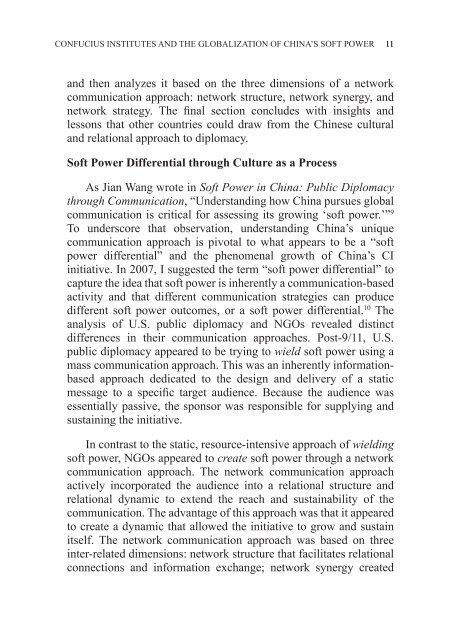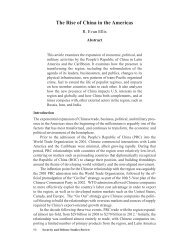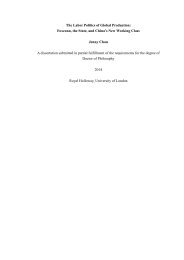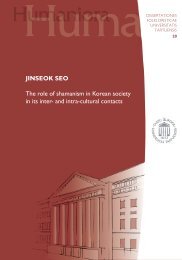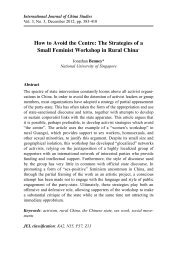Confucius Institutes v2 (1)
Confucius Institutes v2 (1)
Confucius Institutes v2 (1)
You also want an ePaper? Increase the reach of your titles
YUMPU automatically turns print PDFs into web optimized ePapers that Google loves.
CONFUCIUS INSTITUTES AND THE GLOBALIZATION OF CHINA’S SOFT POWER 11and then analyzes it based on the three dimensions of a networkcommunication approach: network structure, network synergy, andnetwork strategy. The final section concludes with insights andlessons that other countries could draw from the Chinese culturaland relational approach to diplomacy.Soft Power Differential through Culture as a ProcessAs Jian Wang wrote in Soft Power in China: Public Diplomacythrough Communication, “Understanding how China pursues globalcommunication is critical for assessing its growing ‘soft power.’” 9To underscore that observation, understanding China’s uniquecommunication approach is pivotal to what appears to be a “softpower differential” and the phenomenal growth of China’s CIinitiative. In 2007, I suggested the term “soft power differential” tocapture the idea that soft power is inherently a communication-basedactivity and that different communication strategies can producedifferent soft power outcomes, or a soft power differential. 10 Theanalysis of U.S. public diplomacy and NGOs revealed distinctdifferences in their communication approaches. Post-9/11, U.S.public diplomacy appeared to be trying to wield soft power using amass communication approach. This was an inherently informationbasedapproach dedicated to the design and delivery of a staticmessage to a specific target audience. Because the audience wasessentially passive, the sponsor was responsible for supplying andsustaining the initiative.In contrast to the static, resource-intensive approach of wieldingsoft power, NGOs appeared to create soft power through a networkcommunication approach. The network communication approachactively incorporated the audience into a relational structure andrelational dynamic to extend the reach and sustainability of thecommunication. The advantage of this approach was that it appearedto create a dynamic that allowed the initiative to grow and sustainitself. The network communication approach was based on threeinter-related dimensions: network structure that facilitates relationalconnections and information exchange; network synergy created


